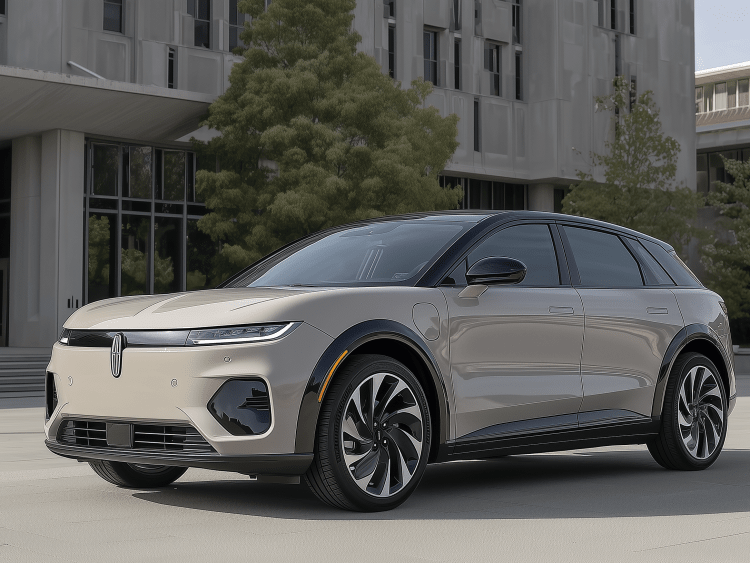As the automotive industry continues its steady march toward electrification, one name in the American luxury market remains noticeably quiet: Lincoln. While its competitor Cadillac races ahead with an impressive lineup of electric vehicles (EVs), Lincoln has yet to make a bold move into the EV arena. In an era where innovation defines relevance, Lincoln risks losing its grip on luxury relevance unless it delivers a compelling electric offering—and soon.
Cadillac’s Bold EV Push
Cadillac, the crown jewel in General Motors’ luxury division, has emerged as a front-runner in EV adoption among American legacy brands. With six electric models already on the market and more on the horizon, Cadillac expects its EVs to account for up to 35% of its U.S. sales. Models like the sleek CELESTIQ and the forthcoming Escalade IQL demonstrate a commitment to combining performance, luxury, and cutting-edge technology in an electric package.
This aggressive EV strategy is paying off. Cadillac has successfully woven electrification into its brand identity, appealing to a new generation of luxury buyers while maintaining loyalty among traditional customers. By comparison, Lincoln’s silence is starting to speak volumes.
Lincoln’s Quiet Stance on EVs
Ford, Lincoln’s parent company, isn’t ignoring EVs. It already sells three: the Mustang Mach-E, the F-150 Lightning, and the E-Transit van. Yet Lincoln remains on the sidelines, offering no fully-electric models in a time when competitors are racing to fill every EV niche. Given Ford’s EV platforms and production capability, Lincoln’s absence seems more like hesitation than limitation.
But the opportunity is there—and the Mach-E might be the perfect starting point.
A Blueprint for Lincoln’s First EV
Imagine this: a luxurious, all-electric Lincoln crossover, built on the same platform as the Ford Mustang Mach-E. Far from a rebadge, this vehicle would embody Lincoln’s core values—comfort, elegance, and serenity—while delivering the kind of performance and technology expected from a premium electric vehicle.
The Mach-E has proven its mettle in the marketplace. In 2024, it outsold both the Chevrolet Blazer EV and Equinox EV combined, and even surpassed sales of the traditional gas-powered Mustang. With dual-motor eAWD delivering 365 horsepower and a well-earned reputation for drivability, the Mach-E provides a strong foundation for a Lincoln variant designed to rival Cadillac’s electric offerings—specifically the Cadillac Optiq, which starts at just under $53,000.
Performance Meets Poise
To go toe-to-toe with the performance-oriented Optiq-V, Lincoln would need to offer more than just refined aesthetics. The Mach-E GT Performance Edition, with its 480-horsepower dual-motor setup and 0-60 mph sprint time of just 3.5 seconds, presents an ideal powertrain candidate. But where Lincoln could truly differentiate itself is in the cabin experience.
Instead of racing stripes and bolstered seats, imagine massaging chairs, a panoramic sunroof that slides open at the touch of a button, and a bespoke Revel sound system immersing passengers in audio luxury. All of this would remain wrapped in a hushed interior, staying true to Lincoln’s “quiet flight” philosophy—offering not just performance, but peace.
The Stakes Are Higher Than Just Competing With Cadillac
The luxury compact electric crossover segment is exploding, and Lincoln’s inaction risks missing a historic window of opportunity. Every serious premium brand already has a stake in this game.
From Europe: the Audi Q4 e-tron, Mercedes-Benz EQB, Volvo EX40, and Maserati Grecale Folgore. From Asia: the Lexus RZ, Acura ZDX, and Genesis GV60. On the home front, alongside Cadillac’s Optiq, we see names like the Jeep Wagoneer S, Rivian’s upcoming R2, and the ever-popular Tesla Model Y, which starts under $38,000.
These are not concept cars—they’re in showrooms, being test-driven, and finding homes. They represent brand relevance, buyer interest, and future market share.
A Silent Crisis for Lincoln
Lincoln’s strength has always been its ability to offer serene, indulgent vehicles with a timeless appeal. But serenity alone won’t carry the brand into the future. Today’s luxury buyers want the confidence of cutting-edge technology, environmentally responsible choices, and compelling performance—wrapped in the elegance that Lincoln is known for.
Waiting too long may see Lincoln arrive in a segment already saturated with mature competitors, where early adopters have already formed loyalties and expectations. A rushed, reactive EV release years from now won’t carry the same weight as a bold, proactive statement made today.
Final Thoughts
Lincoln doesn’t just need an EV to compete with Cadillac—it needs an EV to stay relevant. With the tools already in place and a market that’s clearly eager for more electric luxury crossovers, the time for hesitation is over. A Lincoln EV, born from the proven bones of the Mach-E but elevated with the brand’s signature refinement, could be the game-changer Lincoln needs.
As rivals sprint toward an electrified future, Lincoln stands at a critical crossroads. The question isn’t just if the brand should build an EV—it’s whether it can afford not to.




